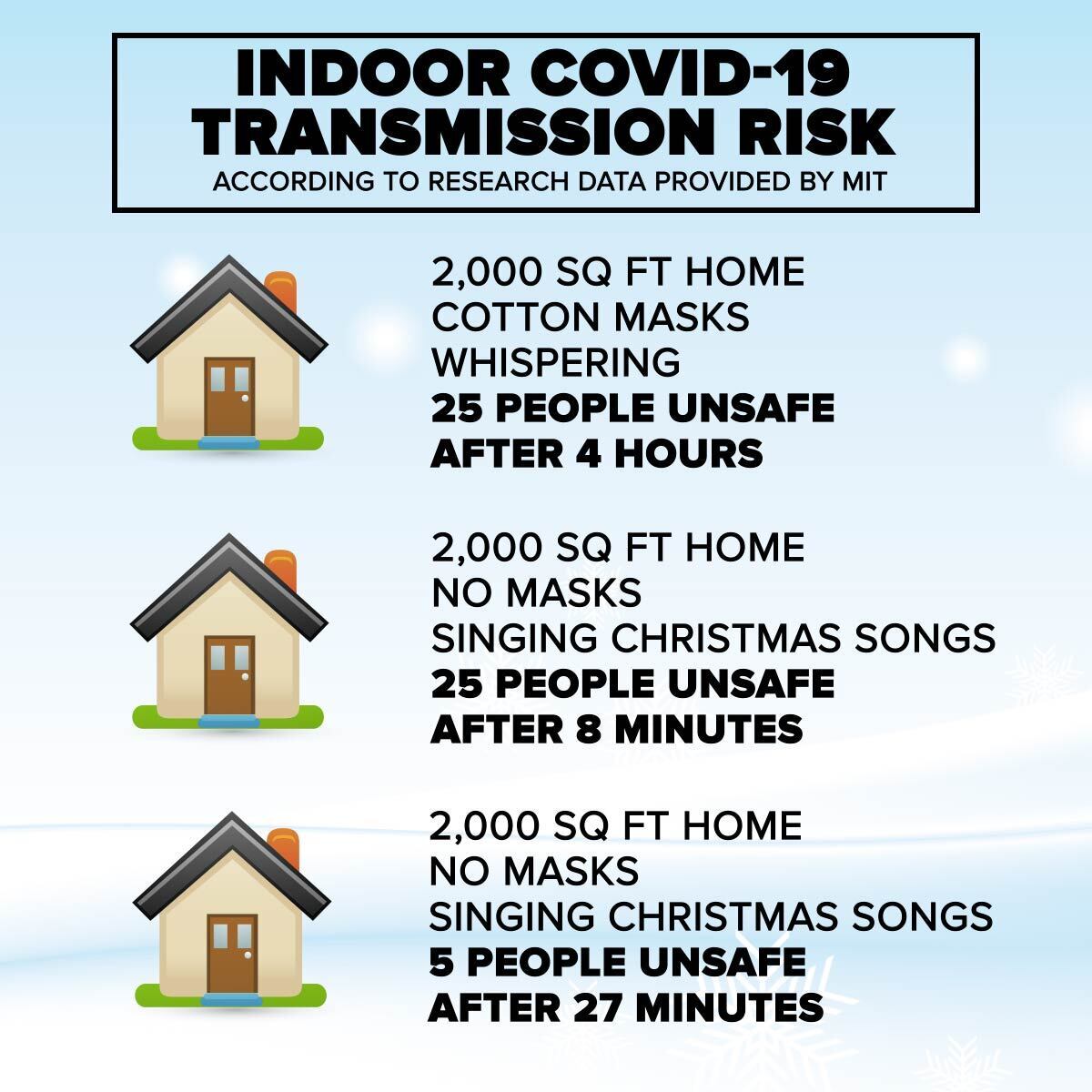As health experts warn about rising coronavirus cases from spread at indoor gatherings, a new website backed by recent research is trying to help people understand just how many people in what size space is risky for infection. Which could come in handy as some people consider small holiday gatherings.
It’s more risky to be in a small room compared to a large gym. If people are calm and quiet, it is safer than singing or exercising no matter how distant they are.
Given these types of scenarios, and the “rapidly advancing science” of how COVID-19 droplets behave, scientists at the Massachusetts Institute of Technology created the COVID-19 Indoor Safety Guidelineapplication.
Here’s an example:
An average suburban house that is 2,000 square feet, with 25 people inside wearing cotton masks and talking in a whisper, can reduce their risk of transmission by only staying inside for 4 hours.
If those same 25 people, in the same house, are not wearing a mask and are talking normally, the length of time to reduce transmission drops to just 50 minutes.
And if those 25 people, in the same house, are singing along to Christmas music, without masks on, that time to safely reduce COVID-19 transmission indoors drops even further to just 8 minutes.
If the size of the gathering is only 5 people, and there is still singing, no mask wearing, and it’s still a 2,000 square foot house, it becomes unsafe after just 27 minutes.

TheMIT website offers users the ability to select room size, number of people and length of time, then using previous research and scientific knowledge of airborne viruses, it predicts the risk of the indoor event. Users can change elements of the situation, like room size, mask wearing, ventilation, etc.
Click here to visit the Indoor Safety Guideline website.
In a restaurant, to reduce transmission, 50 people without masks and talking normally should stay for only two hours. If the restaurant has 100 people, to reduce transmission risk, they should only remain inside for 64 minutes.
The researchers note current general social distancing guidelines (remain 6 feet apart) suggest 138 people would reduce their risk in the same size of space for an indefinite amount of time.
Another example, a Boeing 737, the researchers’ model predicts 100 people can be onboard a 737 wearing masks and still reduce their risk of transmission by staying onboard less than 6 hours.
The CDC updated their guidance about COVID-19 this fall, acknowledging ongoing research that shows coronavirus droplets “can remain suspended for many minutes to hours (in the air) and travel far from the source on air currents.”
The Centers for Disease Control and Prevention also says coronavirus droplets can remain even when an infected person has left the room and can travel farther than six feet.


